Kawasaki’s 600 Supersports | A short history with Faffi
Only one year after Yamaha showed us their XJ600, Kawasaki came out with the GPz600R. First shown to the public late in 1984 for the 1985 model year, the bike was met with great enthusiasm.

Kawasaki chose to name it Ninja for USA, a name that they now use on all of their sport models worldwide. And it was a far more modern machine than anything seen before in the class, with a timeless and elegant design that still manages to look good today, more than 30 years later.
The bottom half of the engine came virtually straight off the air cooled GPz550, but from the cylinders up it was all new, with liquid cooling and four valves per cylinder.
Kawasaki claimed 75 hp of thrust were at the rider’s disposal. A slippery fairing helped it to obtain impressive top speed numbers, although acceleration was similar to that of the technically much simpler Yamaha 600.
Power delivery was flat and uninspiring below 8,000rpm, and the little rush that took place from there on up to 11,000rpm was too little too late to be really exciting.
The seating position was very racy, with the low bars a long reach beyond the fuel tank and a seat well dished down behind the fuel tank. 16 inch wheels were all the rave at the time, and the GPz was only the second bike after the FJ1100 to be fitted with such rims both front and rear.
Regardless of the bike being quite low and the engine fairly wide, Kawasaki had managed to equip the bike with nigh on limitless cornering clearance. At least with the street tyres available back then.
Tyres also played a major role in how the bike handled, and both tyre model and their condition affected stability and tracking. With worn tyres it could be a real handful at speed, whereas it would generally be stable to tops speed with brand new rubbers.
For 1987, Kawasaki also made a limited number of the 600 fitted with the aluminium frame from the domestic GPz400R.
The GPz600RX was six kilograms lighter than the steel framed version, and together with a narrower front tyre and steeper steering angle, handling was ultra-quick and “requires the practiced hands of a surgeon”, according to Cycle World.
But even so equipped, it couldn’t quite match the FZ600 from Yamaha on a tight and twisty back road due to the latter’s more tractable power output and greater handling precision.
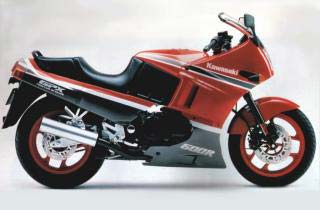
One year later Kawasaki entered a completely revamped Ninja, the GPX600R. The previous perimeter frame had now been replaced by a more old-fashioned frame completely hidden under the new plastic. But it was a better motorcycle with a significantly upgraded engine that now made an extra ten horses. And not only did it make a lot more top-end power; it also made significantly more power in the midrange.
For racing, everybody seemed to prefer 18 inch wheels over the stock 16 inchers, a change that made the handling at racetrack speeds a lot more predictable. Of course, by 1988 most manufacturers had already started to fit their sport machines with 17 inch wheels because the 16 inchers had proved to be too much of a good thing.
Two years after the introduction of the GPX, although the model was retained for many years as a low-budget alternative, Kawasaki stunned the world with a real powerhouse; the mighty ZZR600, or ZX-6 Ninja as it was named in some markets.
It was an all-new bike with state-of-the-art, wide 17 inch wheels, an aluminium perimeter frame and a powerful ultra-short-stroke engine. Despite the high-tech frame and other bits, it had gained quite a bit of weight and now carried a scale-crushing 222kg around, partly because it was physically big, partly because Kawasaki probably didn’t try hard enough to make it light.
But the extra power, 98hp claimed along with a 14,000(!) rpm redline, more than made up for that. Along with slippery bodywork, it proved to be the fastest 600 machine of its day, with testers praising its 750-like performance. The share size of the thing along with the flexible power made it a splendid sports-tourer, but it was less successful as a track weapon.
Tired of paying second fiddle to Honda, who had worked hard to come up with a package that managed to be both reasonably comfortable and good handling, Kawasaki revamped the ZZR for 1993. Power was increased again, this time to an even 100 horses. In addition, power was said to rise with speed due to its new ram air intake.
A new, shorter and nimbler chassis aided handling, making the bike much nimbler to ride at speed. Weight, however, remained virtually unchanged, and they managed to retain comfort so that it continued to work well as a sporty tourer. Admirably, the engine not only made more top end power, it made more power everywhere, giving the bike class-leading roll-on performance as well as the best acceleration and highest top speed.
At least the machine tested by American magazine Cycle World, who recorded an extra 10 horses compared to the previous version. The German magazine MOTORRAD, on the other hand, found their test bike to make only one extra horsepower and 5 per cent less torque. It also topped out at 228 kph, 3 km/h less than the older version they tested. I guess that’s what production tolerances will give you.
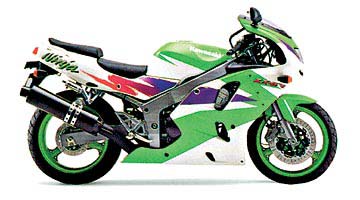
For 1995, Kawasaki finally went back to their roots of the original GPz600R and hit the market with a real race replica, a much lighter and better handling bike than the ZZR. The ZX-6R Ninja was an all-new design with an aluminium frame that was significantly lighter than its predecessor. Performance proved to be class-leading for many years, with excellent power and acceleration available from the new motor. Despite being more track-oriented, the new bike remained useful for ordinary street chores.
Kawasaki did an upgrade of the ZX-6R for 1998, but it was heavily based upon the existing machine, albeit seriously refined. Without losing its streetability, it managed to offer better performance for the track. Weight was again lowered, putting it on par with the featherweight Gixxer from Suzuki. A better ram air system as well as better aerodynamics increased top-speed despite no actual gains in measured power, although Kawasaki now claimed 108hp at 12,000rpm should be available.
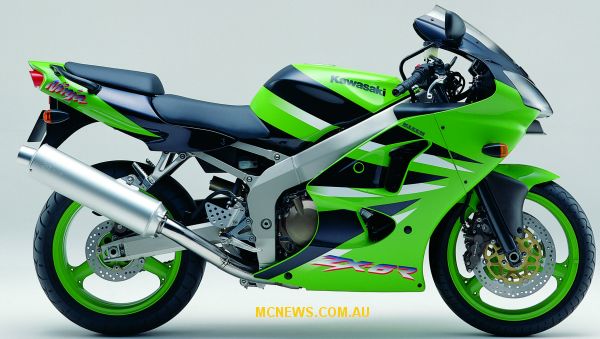
Over the following years, the bike was continually refined. Claimed power continued to rise until 112hp was reached by the end of the model’s run. Weight had been trimmed to 199 kilo with fuel in year 2000, when it received another, slightly more extensive makeover. With the introduction of the all-new ZX-6R for 2002, the ‘old’ Ninja was handed another segment of the market; according to Kawasaki it was now a sports-tourer.
Kawasaki even dug up the old ZZR designation for it in some markets to further distinguish it from the new model. This shows how rapidly things are progressing in the highly competitive 600 class; extreme race rep one day, soft sports tourer the next.
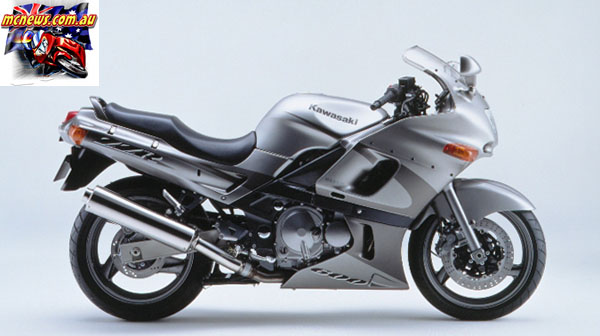
Kawasaki decided to gain an upper hand over the competition with the all-new 2002 model by cheating a bit; this ZX-6R had a displacement of 636 cc. Hence that’s all that will be said of it, since it was no more a true 600. Luckily for Kawasaki, since otherwise they’d be left out of this story, they released a ZX-6RR for 2003 to accompany the 636, a true 600. It was also more radical than any former 600 Ninja, going head-to-head with the R6 from Yamaha and GSX-R from Suzuki, sacrificing comfort and versatility in the process.

With the RR, Kawasaki also saw fit to introduce digital fuel injection as a replacement for the old carburettors. One can only wonder why it took so long, because Kawasaki had fuel injected bikes in production as far back as the end of 1979. With a claimed 113 hp at 13,200 rpm, the new Ninja didn’t set any new records, but actual performance was similar to that of the competition.
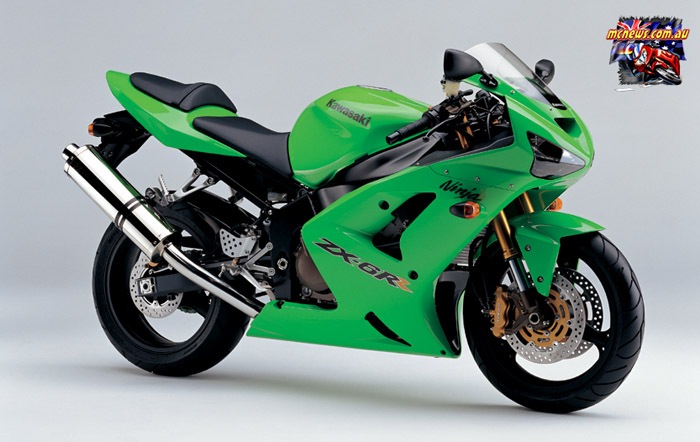
The RR was all-new from the very ground up, with Kawasaki going to great lengths in order to reduce weight and size. The chassis offered more adjustability than ever before on a mass-produced motorcycle, and to further enhance its track-ability Kawasaki saw fit to equip the transmission with a slipper clutch.
Apparently, it wasn’t good enough, though. Just one year later,, in 2004, Kawasaki gave the 6RR a total makeover, trying to make it more competitive. They continued to upgrade it, upping their power claims until it by 2006 made a claimed 123 hp. In reality, few bikes delivered managed to live up to those claims.
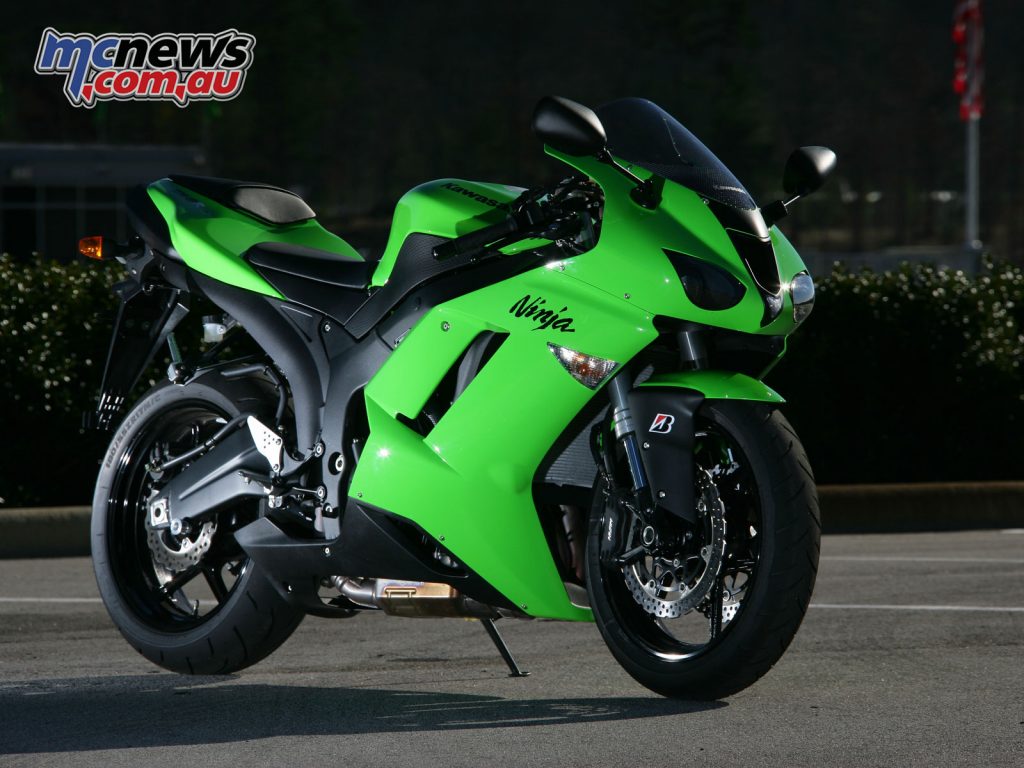
2007 would see a major redesign of the ZX-6R, with the 636 version dropped from the line-up at just the 599cc version was offered. The new engine featured a stacked gear arrangement along with a host of other changes, with the engine more compact, allowing greater cornering clearance.
The frame, swingarm, body and brakes were all new in 2007 as well, and this model would carry over into 2008 with just new colour options available.
2009 would see another major revision with the ZX-6R dropping 10kg thanks to the removal of the underseat exhaust, favouring a more centralised unit, while Showa Big Piston Forks were also added. Styling was also revised to more closely match the flagship ZX-10R.
Further changes would be seen in 2010 on a more modest scale, with a slipper clutch and a different exhaust system, as well as double bore intake funnels. The seat was also lowered.
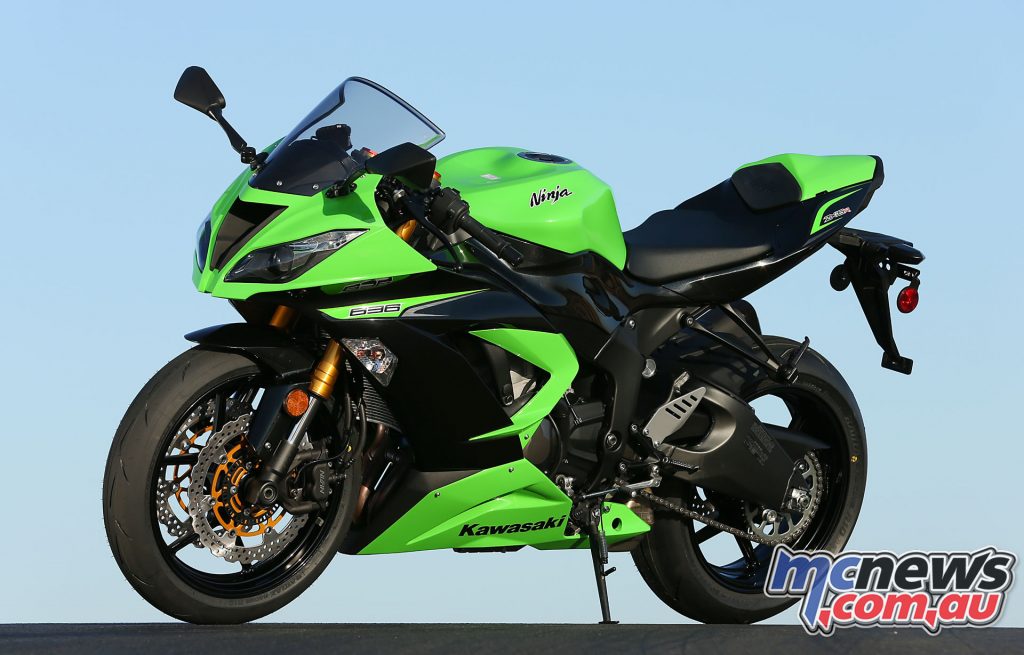
This model would continue to be available, while in 2013 a 636cc version was once again available, this time with an extensive electronics package. It would be sold alongside a 599cc version available for racing in the 600cc class.
These days, if you could jump from a 1985 GPz directly onto any of the Ninjas made from 1995 onwards, you could have sworn the power output had been doubled. At least. Where the original 600 was slow to rev and never felt like it could bite you, the later editions have a level of urgency in their power delivery that is addictive and very satisfying.
The riding position has also evolved over the years, mostly by bringing the handlebars closer to the rider. Still, the bike from ’85 will feel reasonably familiar even to riders brought up on more current material, at least when it comes to how you are sat on the bike. Handling won’t be as recognisable, what with its uncommon wheels and relatively harsh suspension.
That doesn’t mean the bike cannot hustle even today; it has enough power, handling and overall competence to let a good rider keep up with slightly lesser riders on modern race replicas as long as the straights aren’t too long.
It is also a better bike for beginners due to its more docile power delivery and a chassis that gives a fair warning before it’s too late, offering the novice a chance to slow down instead of crashing. At least in theory…
Kawasaki 600cc Supersport Performance 1985-2003
Model rwhp @ rpm 1/4 mile @ km/h Top Speed Redline Wet Weight Roll on in top, 65-130km/h
- ’85 GPz 62 @ 10,500 12.19 @ 177 215 11,000 217 11.0
- ’88 GPx 69 @ 11,000 11.72 @ 180 220 11,000 207 8.9
- ’90 ZZR 78 @ 11,500 11.36 @ 189 237 14,000 222 9.7
- ’93 ZZR 88 @ 11,250 11.19 @ 198 246 14,000 223 8.3
- ’95 ZX-6R 95 @ 12,000 10.89 @ 206 248 14,000 207 7.8
- ’98 ZX-6R 95 @ 12,600 10.92 @ 202 256 14,200 203 8.0
- ’00 ZX-6R 96 @ 12,600 10.85 @ 204 246 14,500 199 8.5
- ’03 ZX-6RR 98@ 13,000 10.89@ 205 248 14,500 199 8.5
NB: Figures are taken from Cycle, Cycle World and MOTORRAD























